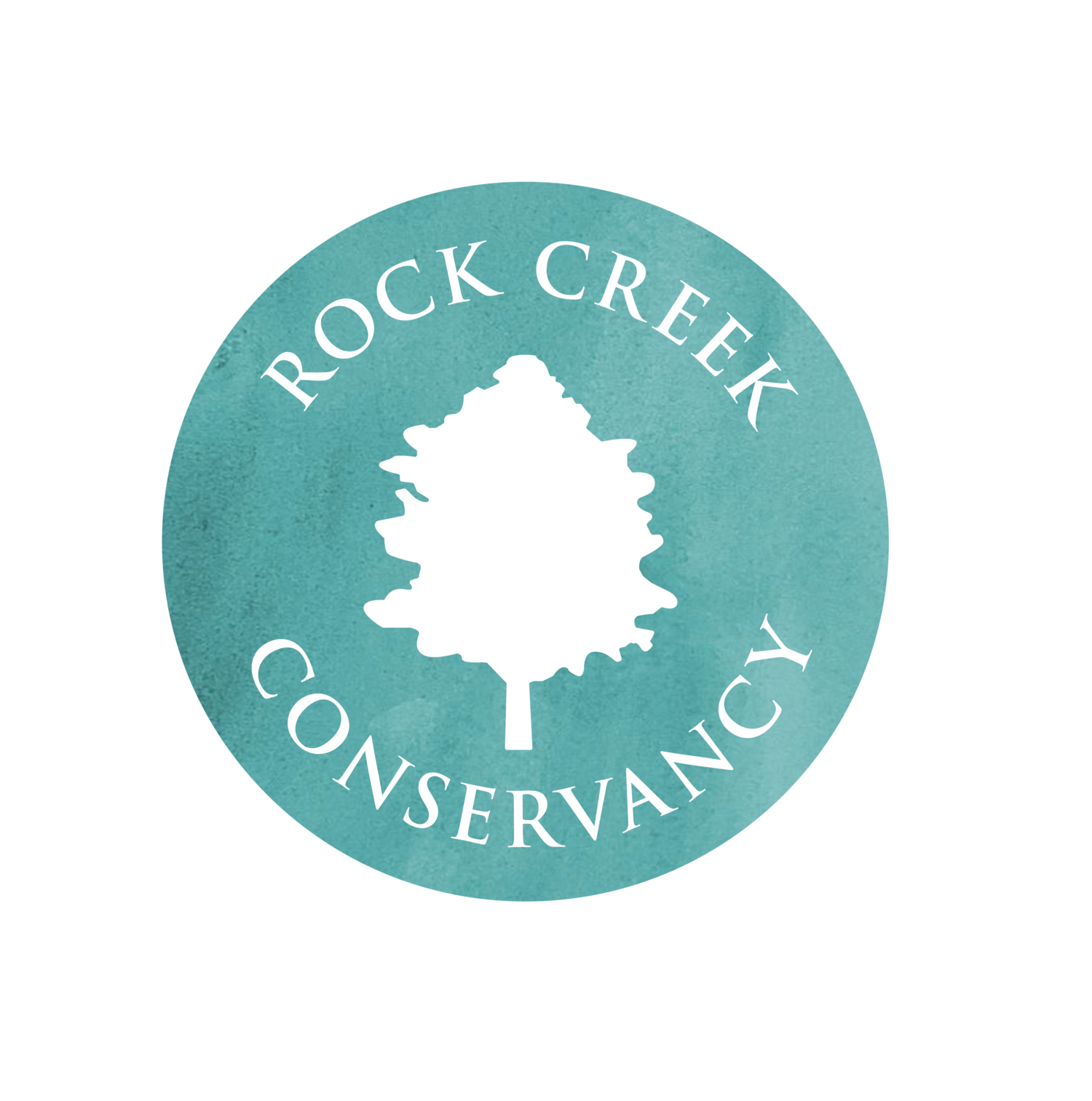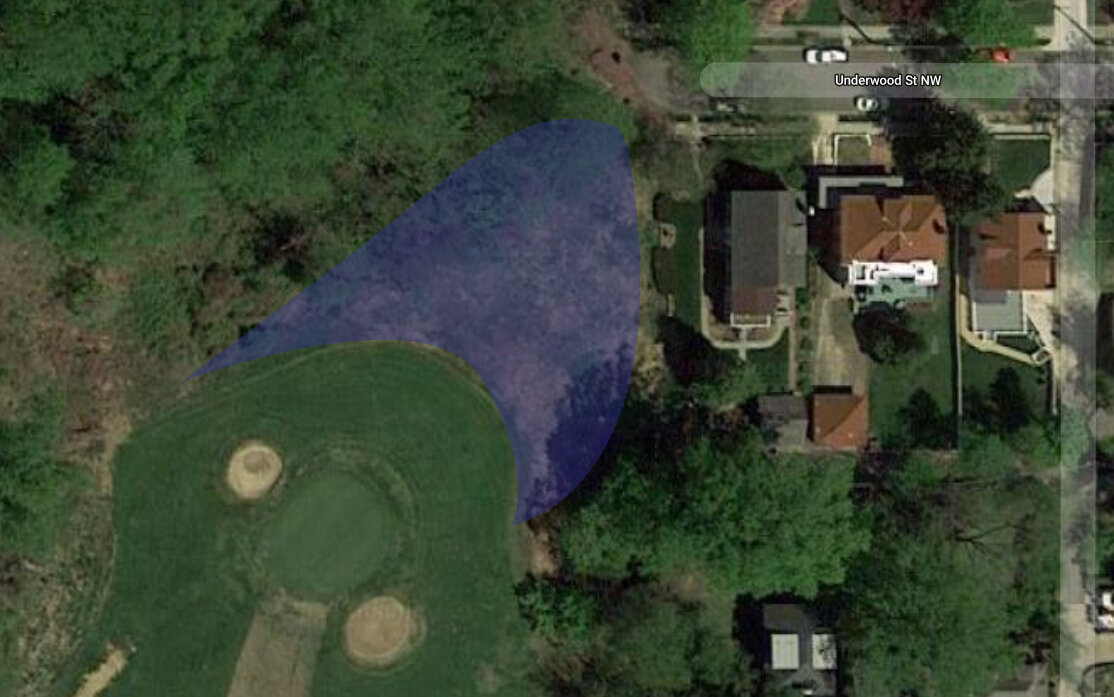
Meadow Makeover at the Eighth Hole
We're transforming this snarl of vines into a beautiful meadow!
Rock Creek Conservancy, with the support of generous neighbors, is restoring a section of land next to the eighth of the Rock Creek Park Golf Course which began as a thicket of invasive plants.
Not all green is created equal: while the thick growth of plants in this area may seem lush and green, most of these plants are invasive vines that crowd out the native grasses and wildflowers that belong in this sunny spot.
Vines like these climb up and over trees, so removing them here also protects Rock Creek's forests.
This restoration area is defined to the south by the eighth hole of the Rock Creek Golf Course and to the north by Rock Creek Park's forest and Underwood St NW. This area was overrun with invasive plants including porcelainberry and mile-a-minute vines, which will be removed before the area is seeded with native grasses and flowers.
What's the Plan?
It all begins with an idea. Maybe you want to launch a business. Maybe you want to turn a hobby into something more. Or maybe you have a creative project to share with the world. Whatever it is, the way you tell your story online can make all the difference.
Step 1: Remove invasives.
The Conservancy has hired a specialist in invasive plant management to undertake most of this work. Volunteers such as Weed Warriors will maintain the site in the years to come.
We removed the vines so that native grasses and flowers have a chance to thrive here. A diverse selection of native plants will provide vital urban habitat for pollinators in addition to beautifying the neighborhood.
Step 2: Monitor regrowth.
The specialist will return to monitor any regrowth and spot-treat those persistent vines. A very targeted herbicide will be used to ensure the invasive plants do not return.
Step 3: Seed the site.
Conservancy staff and volunteers will spread seeds (a mix of grasses and wildflowers, such as goldenrod, Joe Pye weed, bottlebrush, or northern sea oats). These will be watered and tended for the first week to increase the odds of survival. Then the wait for a spring bloom!
Step 4: Community cultivation.
The site will be carefully monitored for any return of invasives, and people-power will be harnessed to keep the vines at bay. Weed Warriors and/or Rock Creek Conservation Corps members will reduce vines from the trees nearby to create a ‘moat’ around the site.
Ongoing people-powered restoration work at this site supports community cultivation of the field, ensuring invasives don't return and native flora, including pollinators, can begin to appear and thrive.
Step 5: enjoy!
A meadow in full bloom is a gorgeous site, not just for golfers, but for birders, hikers, runners, and the rest of us that love a healthy ecosystem. Not to mention the sheer joy a butterfly or bird must experience when coming upon a veritable buffet, rather than a big pile of stuff-they-don't-eat (aka invasive plants).
This project is generously supported by neighbors Jim Gray and Henry Louis.
Donate to Rock Creek Conservancy to support this and other restoration projects throughout the Rock Creek watershed including our five people-powered Mini-Oasis restoration sites.







